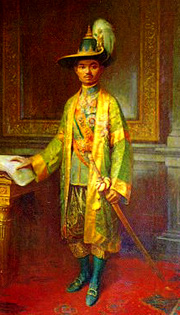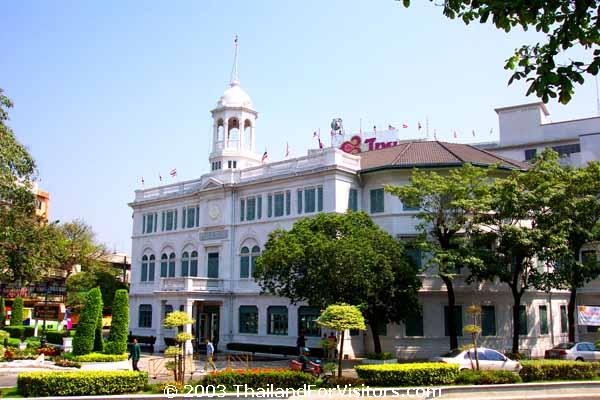King Prajadhipok ruled as Rama VII for just ten years, from 1925 to 1935, but his reign marked the end of the absolute monarchy. This makes the king an interesting subject and a new museum was open in 2001 specifically devoted to him.

Official portrait of King Prajadhipok
Prajadhipok was the 76th child and last born son of King Chulalongkorn (Rama V), making him the brother of King Rama VI. He wasn't destined to be king, and planned to serve in the military. However, when King Rama VI died without heirs and other, better placed, brothers were dead as well, he became Rama VII.
The young Eton-educated king apparently was in favor of constitutional government, and drafts of a constitution are on display in the museum. What actually happened depends on which version of events you believe. Some say the old guard on the king's Council of State prevented him from introducing the constitution. The other side is that middle ranking officials, afraid of losing power, staged a pre-emptive coup to force their own constitution on the king.
The constitution forced on the king in 1932 pushed him to the sidelines as a mere figurehead. Frustrated by what he saw as the new government's failure to act in the best interests of the people. King Prajadhipok abdicated in 1935 and lived out the rest of his life in England. In 1960, the Englishman Gerald Sparrow wrote this about the king:
"Siam had never been governed so economically and so wisely as it was under King Prajadhipok, and, whisper who dares, the standard has not quite been maintained since... In England he died, and only now are the Siamese people beginning to realize how good and honest and enlightened he was."
The Museum Building

The Rama VII Museum near the Golden Mount in Bangkok
The museum building has a rather interesting history of its own. It was completed in 1908 after six years of construction. It originally housed the John Sampson Store, which sold Western high fashions and tailor made suits. Eventually, the building changed hands and was renamed the Suthadilok Store, which sold construction materials including sanitary equipment. The Public Works Department acquired the building in 1933 to use as its headquarters.
The building was designed by M. Charles Beguelin, a French-Swiss architect. Its constructed mostly from concrete in a neo-classical style. The building was registered as a national heritage site by the Fine Arts Department in 1995. A total conservation and renovation project was completed in 1999, and the building was converted to be the King Prajadhipok Museum in 2001.
The Exhibition
The museum occupies three floors. The ground floor has space for temporary exhibits, the museum shop and cafe. The second and third floors house the permanent exhibits, which are arranged in rough chronological order.
On display are photos and memorabilia from the king's life before he was crowned, the coronation ceremony, the celebrations of Bangkok's 150th anniversary and the revolution. There are also scenes and artifacts from the king's life in England after he abdicated.
Admission & Hours
The admission fee to the museum is 40 Baht (1.04 USD). The museum is open Tuesday to Sunday from 9:00 a.m. to 4:00 p.m. There are guided tours every Tuesday, Friday and Sunday at 2:00 p.m.
You can take it with you.
Wish you could have this information with you when you visit the Rama VII Museum? Now you can. Check out our downloadable eGuides.
Getting There
The Rama VII Museum is located at the Panfa Bridge intersection, near the Golden Mount and Loha Prasat. It is within walking distance of Khao San road and the Democracy Monument. If you don't mind a bit of a walk, take the Chaophraya River Express to the Banglampuu Pier. Walk down Khao San or Ratchadamnoen Roads past the Democracy Monument.